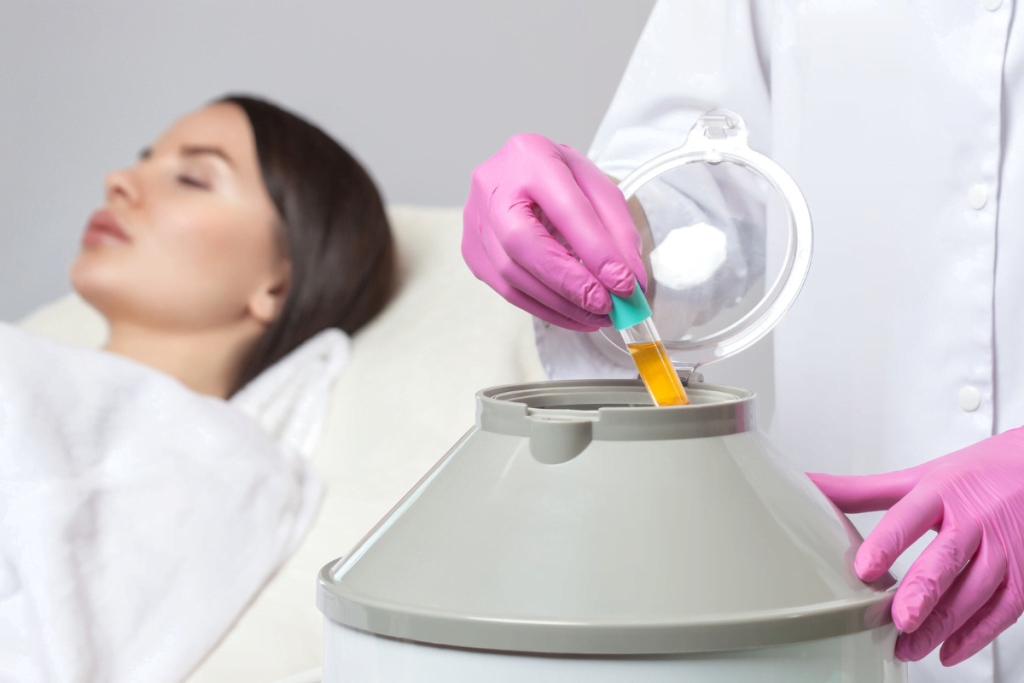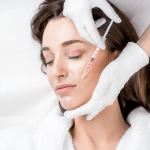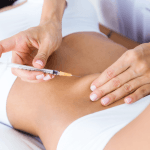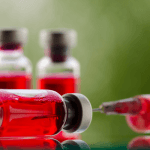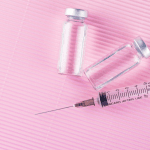Platelet-rich plasma (PRP) is used across aesthetic and orthopedic settings, but operations vary widely by clinic. For many teams, the starting point is simply: what is prp therapy in practical, clinic-facing terms. This guide summarizes the core concept, how the procedure is commonly structured, and where variability shows up. It also covers documentation, sourcing, and expectation-setting for skin regeneration use cases.
PRP is generally described as autologous (from the patient) plasma with a higher platelet concentration than baseline blood. Platelets contain growth factors and signaling molecules that may support tissue repair processes. In practice, PRP is a “process product,” not a single standardized drug. That makes workflow control and patient communication especially important.
Key Takeaways
- PRP is a process, not a single standardized formulation.
- Clinical outcomes depend on protocol, indication, and patient factors.
- Document kit, spin method, and injection technique consistently.
- Costs vary by workflow inputs and bundled services.
- Set expectations for gradual, variable changes and common reactions.
Some suppliers restrict access to verified licensed clinical accounts only.
What Is PRP Therapy and How Clinics Define Scope
In most clinics, PRP starts with a blood draw, centrifugation, and re-injection or topical application. The goal is to deliver a higher concentration of platelets into a target tissue plane. The scope you define should separate the technique (blood handling and injection) from the indication (skin texture, hair thinning, joint pain). That distinction helps with consent language, charting, and coding discussions.
When teams ask what is prp therapy during onboarding, the operational answer matters more than the marketing one. You need a repeatable protocol: tube type, spin parameters, collection fraction, and whether activation is used. These inputs can change the product’s cellular content and viscosity. They also influence how easily clinicians can inject and how patients feel afterward.
Many practices also build PRP into a broader regenerative menu. For example, you may position it alongside mesotherapy (intradermal microinjections of active ingredients) or microneedling-based delivery. Keeping a written scope prevents “protocol drift” as new staff rotate in.
Why it matters: Small workflow changes can materially alter what you inject.
For related clinic inventory and educational context, many teams start at a category hub such as Platelet Rich Plasma PRP, then map products to their own protocols.
Core Components of a PRP Protocol (Beyond the Basics)
PRP is often discussed as a single step, but clinics usually manage a chain of steps. Each link can affect safety, consistency, and patient experience. It also affects staff training time and supply utilization. If you standardize anything, standardize the process and the documentation.
Preparation Variables You Can Actually Control
Start with a short protocol sheet that matches your equipment and staffing. Note the draw volume range your clinic typically uses, your centrifuge model, and how you label specimens. Clarify which fraction you collect and whether you aim to reduce red cells and leukocytes. These choices are commonly described as “leukocyte-rich” versus “leukocyte-poor” PRP, but naming is not universal. Use plain-language descriptors in the chart, such as “low visible red cell contamination,” when feasible.
Also document where PRP is applied. In aesthetics, that might be intradermal injections or topical use after microneedling. In hair loss workflows, it is usually injected into the scalp at defined spacing. In musculoskeletal use, clinicians often target periarticular or intra-articular planes based on their training and local policy. Your role as an operations lead is not to choose the clinical target. It is to ensure the workflow is repeatable and auditable.
Adjuncts and “PRP-Derived” Products
Some practices use PRP-related consumables and gels as part of their service design. If your clinic evaluates packaged PRP-adjacent items, keep boundaries clear: what is autologous and prepared chairside, versus what is a manufactured device or topical/injectable adjunct. Product pages can be useful for packaging and logistics details, such as Plasmolifting PRP Gel, but your clinical governance team should define how (or if) it fits your protocol.
Distribution partners are vetted before clinic-grade products are supplied.
Where PRP Commonly Shows Up: Face, Hair, and Knee Workflows
Clinic interest tends to cluster around three service lines: skin quality, hair thinning, and joint complaints. The operational challenge is that each line needs different consent language, photography standards, and outcome tracking. Avoid reusing a single template note across all indications. That usually creates gaps in documentation.
PRP Treatment for Face: Skin Quality and “Regeneration” Language
PRP for facial aesthetics is often discussed in terms of texture, tone, and overall skin quality. Patients may ask about “glow,” pores, or fine lines. In chart language, it is safer to document objective observations (texture irregularity, acne scarring appearance, dyschromia) and the procedure performed. Avoid promising collagen remodeling. You can state that PRP contains growth factors that may support healing responses, but results vary.
Operationally, facial protocols benefit from standardized photography. If you track “before and after,” use consistent lighting, distance, and facial expression. Patients also ask about “prp treatment for face benefits” and “prp treatment for face reviews.” Those searches are usually about expectations, discomfort, downtime, and incremental change. Your staff scripts should emphasize variability and the difference between short-term swelling and longer-term skin changes.
For deeper reading on combined approaches, see Contrasts Between Mesotherapy And Microneedling and Anti Aging Treatments Overview.
PRP Treatment for Hair: Session Planning and Documentation
Hair indications bring different questions. Teams will hear “prp procedure for hair loss,” “prp hair treatment women,” and “prp treatment for hair how many sessions” early and often. Your clinic should define a standard evaluation workflow, including hair history, contributing factors (postpartum shedding, traction, androgenetic patterns), and baseline photos. Many clinics also track patient-reported shedding and styling changes, but those measures are subjective.
Patients also search “prp treatment for hair before and after.” If you use photography, be strict about parting location, hair length, product use, and timing. Document scalp findings and any concurrent therapies. This avoids attributing changes to PRP when multiple interventions started together. For broader differential considerations, Hair Loss In Young Adults can help frame intake questions.
Some clinics consider non-PRP injectables and skin boosters in the same service line. If you stock them, keep training and labeling distinct. Examples include Plinest Hair and Nucleofill Hair, which should be treated as separate modalities with their own IFU and documentation.
PRP for Knee Complaints: Recovery Narratives and Follow-Up
Musculoskeletal use often generates “prp treatment for knee cost,” “prp injection knee recovery time,” and “prp injection knee success rate” questions. From an ops standpoint, the key is consistent post-procedure instructions and realistic downtime language, aligned with your clinicians’ practice. Short-term soreness and swelling may occur after injections. Patients should know which symptoms are expected versus concerning, and who to contact after hours.
If your team wants an orientation to orthopedic context, PRP Orthopedic Advancements provides a high-level overview. Keep in mind that protocols vary by specialty training and local standards.
Interpreting Outcomes: Success Rate Questions, Photos, and Side Effects
PRP outcomes are hard to compare across clinics because preparation methods and indications differ. Patients still ask for a single “success rate,” especially for hair. A practical response is to describe what you measure, when you measure it, and what “response” means in your clinic. For hair, that might be reduced shedding, improved hair caliber, or improved photo density. For skin, it may be texture smoothness or scar appearance. For joints, it could be function and pain scales.
When you discuss “before and after,” train staff to separate immediate procedural effects from longer-term changes. Early changes may reflect swelling, redness, or light scattering in photos. That is particularly relevant to “prp facial before and after 3 treatments” conversations. If you use multi-session packages, document each session’s technique, not just the schedule. This makes outcomes more interpretable later.
Side effects are another frequent search topic, including “prp treatment for hair side effects” and “prp treatment for face side effects.” Commonly described reactions include injection-site tenderness, swelling, bruising, temporary headache, or scalp tightness. Infection and nerve injury are uncommon but clinically important risks to cover in consent. Your policies should clarify aseptic technique standards, contraindication screening, and how adverse events are recorded and escalated.
Quick tip: Use the same photo protocol for every follow-up visit.
Authenticity and traceability matter when you source clinic inventory.
Cost and Coverage Conversations Clinics Should Prepare For
Patients and front-desk teams routinely ask about “prp injection cost,” “prp procedure cost,” and line-item costs like “prp injection cost for face” or “prp treatment for hair cost.” Even in a B2B setting, your clinic needs internal clarity on what is included: consultation, photography, centrifuge consumables, topical anesthetic, microneedling add-ons, and follow-up visits. Without that clarity, staff may quote inconsistent ranges or describe PRP as interchangeable with other services.
Coverage is also complex. Searches like “prp injection cost covered by insurance” reflect real confusion. In many settings, aesthetic PRP is self-pay. For musculoskeletal use, coverage decisions can vary by payer, diagnosis, documentation, and local medical policy. Your best operational move is to separate clinical documentation from billing outcomes. Document indication, prior conservative care when relevant, and objective baseline measures. Then let your billing team determine whether a claim is appropriate under your compliance framework.
When patients ask about cost differences between scalp, face, and knee, the operational drivers are similar. They include staff time, procedural complexity, supply use, and whether imaging guidance is involved (where applicable). Avoid quoting “typical” prices in educational content. Instead, use a standardized intake script that explains why ranges vary and what services are bundled.
Clinic Workflow Snapshot: Staffing, Documentation, and Sourcing
Because PRP is process-dependent, clinics benefit from a simple workflow map. Keep it role-based so it works across staffing models. Also keep it aligned with your jurisdiction’s scope rules and your medical director’s policies. The snapshot below is non-prescriptive, but it helps teams reduce variability.
- Verify patient identity + consent documentation.
- Document baseline photos and clinical measures.
- Prepare supplies and label collection tubes.
- Collect blood using aseptic technique.
- Centrifuge and record protocol parameters.
- Prepare injection field and administer procedure.
- Record lot/kit details and any deviations.
- Provide written aftercare and contact pathway.
- Schedule consistent follow-up and photography.
From a procurement perspective, keep PRP-related consumables in a controlled par level and log expirations. If you source through MedWholesaleSupplies or similar channels, your team may be asked to confirm licensure and facility details during onboarding. Some practices also prefer vendors that support reliable documentation for brand-name inventory.
If your clinic operates across multiple sites, consider centralizing receiving under US distribution policies to reduce variation. Then train each site to match the same storage and handling checks for supplies and adjunct injectables.
For technique-oriented background and protocol context, see PRP Therapy With Regenlab. For hair-adjacent services that may share staffing and room time, Mesotherapy For Hair may help with service-line planning.
How to Compare PRP With Adjacent Regenerative Options
Many clinics offer PRP alongside microneedling, mesotherapy cocktails, polynucleotide-based injectables, peptide regimens, and exosome-derived products. Your job is to compare options in terms of workflow fit, training burden, patient selection criteria, and documentation requirements. Avoid comparing based on headline claims or anecdotal reviews. Use a structured intake and track outcomes consistently.
The table below is a practical, non-clinical comparison framework. It helps procurement and clinical leaders ask the same questions across modalities.
| Decision factor | What to define internally | What to document in chart |
|---|---|---|
| Material source | Autologous vs manufactured product | Procedure steps and product identifiers |
| Procedure complexity | Room time, staffing, equipment | Technique summary and deviations |
| Downtime expectations | Typical short-term reactions by area | Aftercare given and patient understanding |
| Outcome tracking | Photos, scales, follow-up schedule | Baseline and follow-up measures |
When patients ask again what is prp therapy compared with other “regenerative” services, keep the answer grounded: PRP is derived from their own blood and is prepared chairside, while other offerings may be manufactured biologics or device-enabled delivery of actives. For a non-PRP skin-rejuvenation overview, Anti Aging With Peptides can support staff education.
Finally, consider the consent and regulatory posture of each modality. PRP is widely used, but its claims and indications should remain conservative. Exosome-related services and other biologic-adjacent categories may carry additional regulatory nuance depending on product type and jurisdiction. If you need background reading for staff, Exosome Therapy For Skin Rejuvenation is a starting point for terminology, not a substitute for regulatory review.
Authoritative Sources
- FDA: Cellular and Gene Therapy Products
- American Academy of Orthopaedic Surgeons (AAOS)
- American Academy of Dermatology (AAD)
For clinics building a consistent skin-focused offering, treat PRP as a protocol to standardize. Define your scope, document your process, and track outcomes the same way every time. If your team is refining technique language, what is prp therapy should be answered in your policies with specific steps, not broad promises.
This content is for informational purposes only and is not a substitute for professional medical advice.

